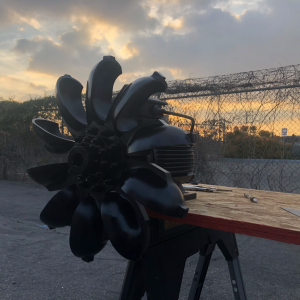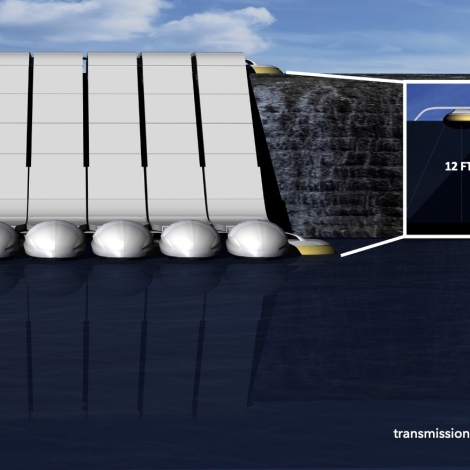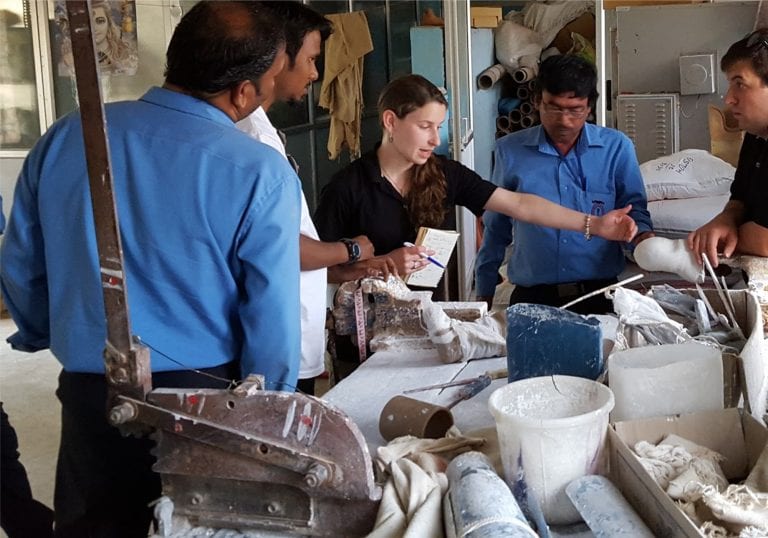GenH’s Adaptive Hydro is one of E4C’s Promising Prototypes to Watch in 2023. Read the list here.

Most of the dams in the United States and around the world are not designed to generate electricity. They’re built for other services, such as flood control and irrigation. GenH is developing technology that can convert those non-powered dams into generators, without the need to invest heavily in construction. Their product, Adaptive Hydro, is in a test phase with plans to scale throughout the US Southwest in 2024.
“The technology is relatively simple,” Siddharth Pannir, GenH’s Founder, told Engineering for Change by email. “Siphons transfer water over the dam into a turbine module where the power is generated and processed.”
The systems have a low impact on waterways, plants and wildlife, and they can be installed easily and quickly, Mr. Pannir says.
The result is a “unique, potentially game-changing climate tech,” says James Creel, Senior Program Manager at the American Society of Mechanical Engineers Innovation Showcase. GenH’s product electrifies waterways without hard infrastructure or high construction costs, Mr. Creel says.
In 2022, GenH won the North American regional ISHOW USA.
See GenH and the other winners of ISHOW USA in 2022
The startup is testing pre-commercial prototypes in the US state of Massachusetts, with plans to deploy in three locations in 2023 and more in 2024.
“In 2024 we are looking to electrify whole irrigation districts across all of US Southwest unlocking ~1.4GW of power in rural agricultural California,” Mr. Pannir says.
No sales business model
GenH plans to pay rent to the people, governments and other entities that own dams. Through their business model, the company will rent the space where their hydro generators operate rather than selling the generators to the owners of the dams. By retaining control of the modular systems, GenH can optimize the location of deployment, accounting for variations in rainfall and river flow.
For owners, charging rent can transform their dams from a liability into an asset. That incentive, plus the low cost of the hydro systems, are the foundation for GenH’s world-spanning plans for growth.
First the US Southwest, then the world
GenH plans to tweak the design of the Adaptive Hydro systems while testing the technology in Massachusetts. The design improvements should increase the system’s modularity and mobility. At the same, time the startup is locking in supply chains and contract manufacturing resources for a smoother scale up. Later in 2023, GenH plans to deploy its systems in a second location in Massachusetts, and also in New Hampshire and California before expanding into the US Southwest in 2024.
“The goal going forward is to have enough revenue incoming to balance out the rate of deployment of the Adaptive Hydro to electrify the non-powered dams around the world within my lifetime (~50 years) and not ~5000 years (which is the current rate of non-powered dam electrification),” Mr. Pannir says.
Not content with the world’s undeveloped dams, Mr. Pannir is also eyeing waves and wind.
“The Adaptive Hydro is just the first step on a pathway of 12 years, wherein we are looking to consequently deploy WavePower, Hydrokinetic, and Accelerated Wind Power systems to displace as much fossil power around the world as possible. The aim is to change the energy-industrial systems that are prevalent in our society… by 2035,” Mr. Pannir says.
For more on GenH please see their website: genh.co/splash.

